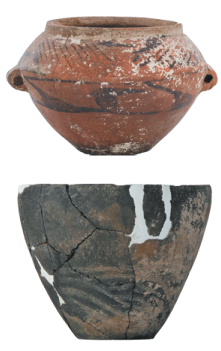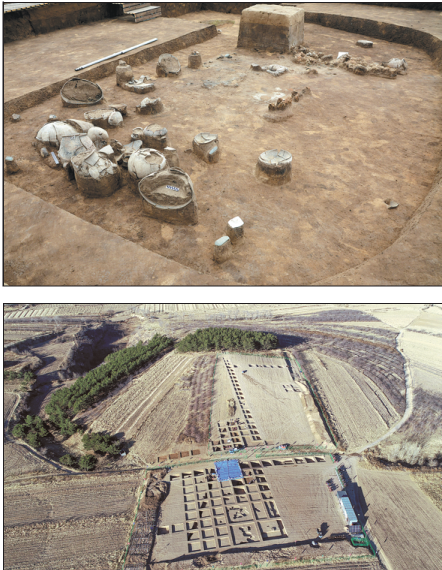New finds illuminate Hongshan Culture
A medium-sized settlement from the early Hongshan Culture period was unearthed during recent archaeological excavations in Jianping county, Liaoning province. The discovery has deepened understanding of this dominant Neolithic culture, which occupied a vast area between the modern-day Inner Mongolia autonomous region and Liaoning province between 5,000 and 6,700 years ago.
The discovery was announced at a news conference by the National Cultural Heritage Administration in Beijing on Sept 28.
The remains of houses, sacrificial pits and articles of daily use, like tools made of stone and bone, alongside pottery vessels, have been discovered at the site, which has been named Ma'anqiaoshan. The site was found in 2018, and excavations by the Liaoning Provincial Institute of Cultural Relics and Archaeology began in 2019 to deepen understanding of Hongshan Culture.
According to Fan Shengying, a researcher at the institute, Ma'anqiaoshan covers an area of about 200,000 square meters. It dates back to between 5,500 and 7,700 years ago and contains traces of two distinct cultures, Hongshan Culture and the earlier Xinglongwa Culture, which dates back to between 7,400 and 8,200 years ago.
"This settlement has residential and sacrificial areas. The residential area is located in the eastern part of the site, and covers about 54,000 sq m. It is surrounded by a moat with a circumference of nearly 900 meters. Inside the moat, 11 houses, 46 ash pits, and one ash trench have been discovered. Four large houses seem to be in the center, with smaller houses and other relics distributed around them," says Fan.
The sacrificial area is in the northern part of the site, where 42 sacrificial pits and three burnt sacrificial remains have been discovered. Intact pottery vessels, stone tools, as well as animal bones and shells have also been unearthed in this area, he adds.
Discoveries show that early Hongshan Culture was settled and mostly relied on agriculture for food.
"Microelement analyses of human and pig bones show that both relied on grain as their principal source of nutrition. This means the early Hongshan Culture period witnessed the development of agriculture, and that the crops harvested were not only used to feed people, but also livestock," he explains.
Zhang Chi, a professor of archaeology at Peking University, says the excavations at Ma'anqiaoshan are very important. "Since the discovery of the Niuheliang site (a major sacrificial site from the late Hongshan period) in Jianping in the 1980s, which was a milestone in the study of Hongshan Culture, it has attracted a great deal of attention," he says.
"Since Niuheliang is so large, many people believe it played a vital role in tracing the origins of Chinese civilization. Sacrifice was considered so important by ancient people that they spared no effort in erecting buildings related to the practice, but to fully understand Hongshan society, we also need to understand the scale of contemporaneous settlements, which we have not yet been able to find," he says.
"Al though Ma'anqiaoshan belongs to the early period of Hongshan Culture, and is not contemporaneous with Niuheliang, it's still a valuable discovery as we haven't excavated many Hongshan settlements so far, and so it helps us answer some pertinent questions," he adds.
Fan also mentions that the sacrificial customs reflected at Ma'anqiaoshan show similarities with those at Niuheliang, but are less complex. "The discoveries at Ma'anqiaoshan are the first sacrificial remains we have found from the early Hongshan Culture period. By comparing them with the finds at Niuheliang, we can better understand the evolution of sacrificial rituals and systems, and their increasing sophistication," says Fan.
"They also prove that Hongshan society underwent complicated changes, possibly leading to the origin and formation of pluralistic, integrated Chinese civilization."
wangru1@chinadaily.com.cn
















